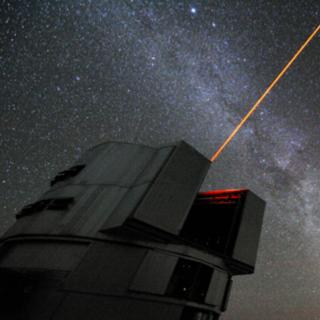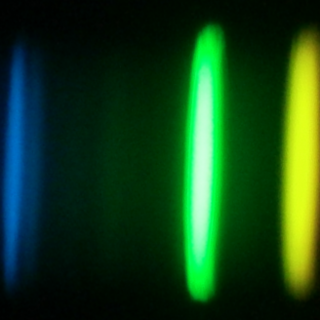Bibcode
Majewski, S. R.; Schiavon, Ricardo P.; Frinchaboy, Peter M.; Allende Prieto, C.; Barkhouser, Robert; Bizyaev, Dmitry; Blank, Basil; Brunner, Sophia; Burton, Adam; Carrera, R.; Chojnowski, S. Drew; Cunha, Kátia; Epstein, Courtney; Fitzgerald, Greg; García Pérez, A. E.; Hearty, Fred R.; Henderson, Chuck; Holtzman, Jon A.; Johnson, Jennifer A.; Lam, Charles R.; Lawler, James E.; Maseman, Paul; Mészáros, Sz.; Nelson, Matthew; Nguyen, Duy Coung; Nidever, David L.; Pinsonneault, Marc; Shetrone, Matthew; Smee, Stephen; Smith, Verne V.; Stolberg, Todd; Skrutskie, Michael F.; Walker, Eric; Wilson, John C.; Zasowski, Gail; Anders, Friedrich; Basu, Sarbani; Beland, Stephane; Blanton, Michael R.; Bovy, Jo; Brownstein, Joel R.; Carlberg, Joleen; Chaplin, William; Chiappini, Cristina; Eisenstein, Daniel J.; Elsworth, Yvonne; Feuillet, Diane; Fleming, Scott W.; Galbraith-Frew, Jessica; García, Rafael A.; García-Hernández, D. A.; Gillespie, Bruce A.; Girardi, Léo; Gunn, James E.; Hasselquist, Sten; Hayden, Michael R.; Hekker, Saskia; Ivans, Inese; Kinemuchi, Karen; Klaene, Mark; Mahadevan, Suvrath; Mathur, Savita; Mosser, Benoît; Muna, Demitri; Munn, Jeffrey A.; Nichol, Robert C.; O'Connell, Robert W.; Parejko, John K.; Robin, A. C.; Rocha-Pinto, Helio; Schultheis, Matthias; Serenelli, Aldo M.; Shane, Neville; Silva Aguirre, Victor; Sobeck, Jennifer S.; Thompson, Benjamin; Troup, Nicholas W.; Weinberg, David H.; Zamora, O.
Referencia bibliográfica
The Astronomical Journal, Volume 154, Issue 3, article id. 94, 46 pp. (2017).
Fecha de publicación:
9
2017
Número de citas
1000
Número de citas referidas
916
Descripción
The Apache Point Observatory Galactic Evolution Experiment (APOGEE), one
of the programs in the Sloan Digital Sky Survey III (SDSS-III), has now
completed its systematic, homogeneous spectroscopic survey sampling all
major populations of the Milky Way. After a three-year observing
campaign on the Sloan 2.5 m Telescope, APOGEE has collected a half
million high-resolution (R ˜ 22,500), high signal-to-noise ratio
(>100), infrared (1.51-1.70 μm) spectra for 146,000 stars,
with time series information via repeat visits to most of these stars.
This paper describes the motivations for the survey and its overall
design—hardware, field placement, target selection,
operations—and gives an overview of these aspects as well as the
data reduction, analysis, and products. An index is also given to the
complement of technical papers that describe various critical survey
components in detail. Finally, we discuss the achieved survey
performance and illustrate the variety of potential uses of the data
products by way of a number of science demonstrations, which span from
time series analysis of stellar spectral variations and radial velocity
variations from stellar companions, to spatial maps of kinematics,
metallicity, and abundance patterns across the Galaxy and as a function
of age, to new views of the interstellar medium, the chemistry of star
clusters, and the discovery of rare stellar species. As part of SDSS-III
Data Release 12 and later releases, all of the APOGEE data products are
publicly available.
Proyectos relacionados

Evolución Galáctica en el Grupo Local
La formación y evolución de galaxias es un problema fundamental en Astrofísica. Su estudio requiere “viajar atrás en el tiempo”, para lo cual hay dos enfoques complementarios. El mas extendido consiste en analizar las propiedades de las galaxias a diferentes distancias cosmológicas. Nuestro equipo se concentra en el otro enfoque, denominado
Emma
Fernández Alvar

Huellas de la Formación de las Galaxias: Poblaciones estelares, Dinámica y Morfología
Bienvenida a la página web del g rupo de investigación Traces of Galaxy Formation. Somos un grupo de investigación amplio, diverso y muy activo cuyo objetivo principal es entender la formación de galaxias en el Universo de una manera lo más completa posible. Con el estudio detellado de las poblaciones estelares como bandera, estamos constantemente
Anna
Ferré Mateu

Nucleosíntesis y procesos moleculares en los últimos estados de la evolución estelar
Las estrellas de masa baja e intermedia (M < 8 masas solares, Ms) representan la mayoría de estrellas en el Cosmos y terminan sus vidas en la Rama Asintótica de las Gigantes (AGB) - justo antes de formar Nebulosas Planetarias (NPs) - cuando experimentan procesos nucleosintéticos y moleculares complejos. Las estrellas AGB son importantes
Domingo Aníbal
García Hernández

Abundancias Químicas en Estrellas
La espectroscopía de estrellas nos permite determinar las propiedades y composiciones químicas de las mismas. A partir de esta información para estrellas de diferente edad en la Vía Láctea es posible reconstruir la evolución química de la Galaxia, así como el origen de los elementos más pesados que el boro, forjados principalmente en los interiores
Carlos
Allende Prieto